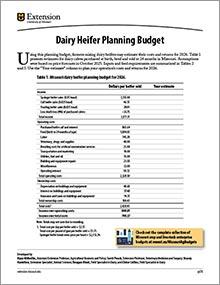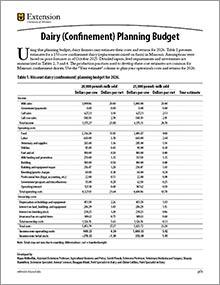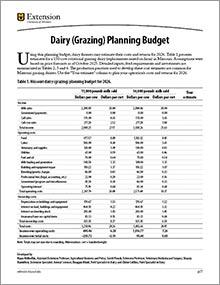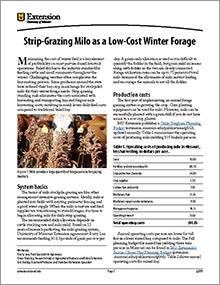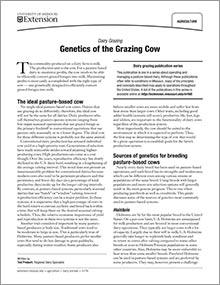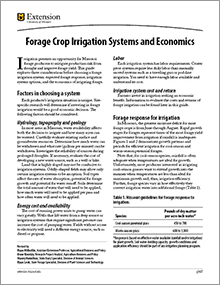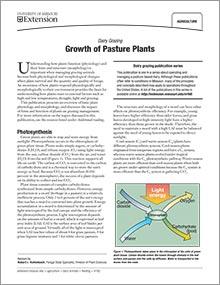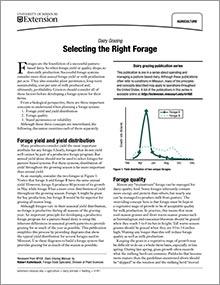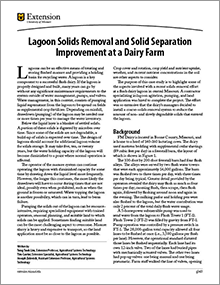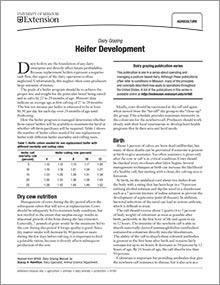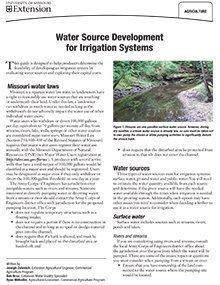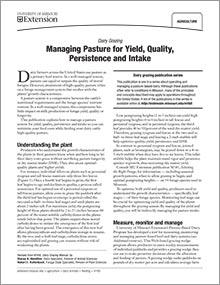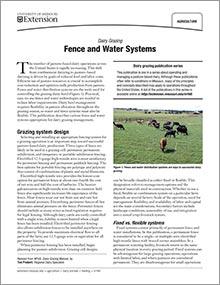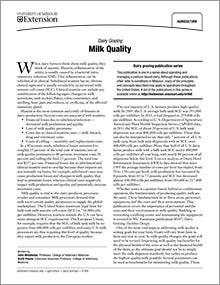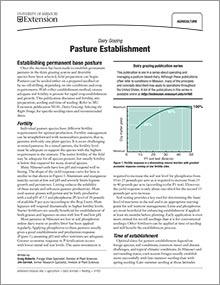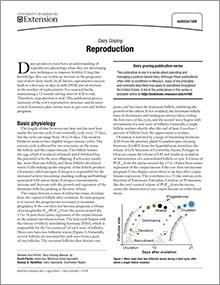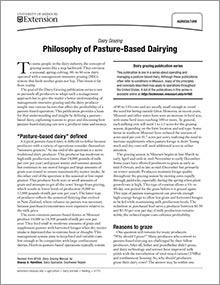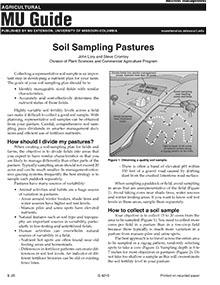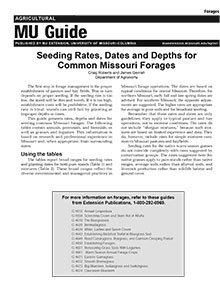The following publications cover topics related to Pasture-Based Dairy. For a complete list of MU Extension publications, visit the main Publications page.
Dairy Heifer Planning Budget
Revised
Use this budget to estimate costs and returns for raising dairy heifers purchased at birth, bred and sold at 24 months in Missouri, and see input and feed needs.
Dairy (Confinement) Planning Budget
Revised
Use this budget to estimate costs and returns for a 150-cow confinement dairy (replacements raised on-farm) in Missouri and see input, feed and investment needs.
Dairy (Grazing) Planning Budget
Revised
Use this budget to estimate costs and returns for a 150-cow rotational grazing dairy (replacements raised on-farm) in Missouri, and see input, feed and investment needs.
Strip-Grazing Milo as a Low-Cost Winter Forage
New
Learn how to utilize strip-grazing milo as a cost-effective winter forage option for livestock, reducing feed expenses and enhancing pasture management.
Dairy Grazing: Genetics of the Grazing Cow
Reviewed
This guide explores selecting dairy cows with genetics suited for pasture-based systems, emphasizing traits like fertility, size, and adaptability.
Forage Crop Irrigation Systems and Economics
Revised
Before choosing a forage irrigation system to mitigate drought risk, explore expected forage response to irrigation, equipment options and the economics.
Dairy Grazing: Growth of Pasture Plants
Reviewed
This publication offers insights into plant physiology and morphology, emphasizing their impact on grazing management.
Dairy Grazing: Selecting the Right Forage
Reviewed
Dairy grazing publication series
This publication is one in a series about operating and managing a pasture-based dairy. Although these publications often refer to conditions in Missouri, many of the principles and concepts described may apply to operations throughout the United States.
Lagoon Solids Removal and Solid Separation System Improvement at a Dairy Farm
Reviewed
Explore methods for managing lagoon solids in flush dairy systems, including removal techniques and solid separation system improvements.
Dairy Grazing: Heifer Development
Revised
Heifers are the foundation of any dairy enterprise and directly affect future profitability. Learn how to manage a heifer development program to maintain a herd with farm-raised heifers and save the cost of buying replacement heifers in this guide.
Water Source Development for Irrigation Systems
Revised
This guide helps producers assess irrigation feasibility by evaluating water sources, legal considerations, and estimating storage needs.
Dairy Grazing: Managing Pasture for Yield, Quality, Persistence and Intake
New
Guidance on managing dairy pastures to optimize yield, quality, persistence, and intake while minimizing feed costs.
Dairy Grazing: Fence and Water Systems
New
This publication describes various fence and water systems appropriate for dairy grazing management.
Dairy Grazing: Milk Quality
New
Learn strategies to enhance milk quality in pasture-based dairies, focusing on mastitis prevention, somatic cell count reduction, and best management practices.
Dairy Grazing: Pasture Establishment
New
Establishing permanent pastures for dairy grazing involves selecting appropriate forage species, ensuring soil fertility, and choosing optimal seeding times
Dairy Grazing: Reproduction
New
Dairy producers, learn about the cow’s reproductive structure and its more critical hormones, plus various ways to get cows and heifers pregnant in this University of Missouri Extension guide.
Dairy Grazing: Philosophy of Pasture-Based Dairying
New
Pasture-based dairying can reduce labor, feed costs, and improve farm profitability. Managing grazing systems efficiently benefits time and financial returns.
Dairy Grazing: Herd Health
New
Learn effective strategies for maintaining herd health and preventing disease in pasture-based dairy operations, applicable across the United States.
Soil Sampling Pastures
New
Collecting a representative soil sample is an important step in developing a nutrient plan for your farm. The goals of your soil sampling plan should be to
Seeding Rates, Dates and Depths for Common Missouri Forages
Reviewed
Visit our site for our resource on Seeding Rates, Dates and Depths for Common Missouri Forages.
